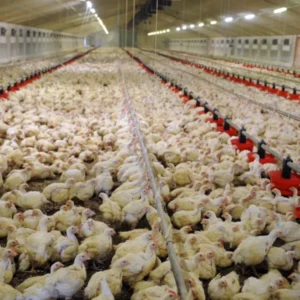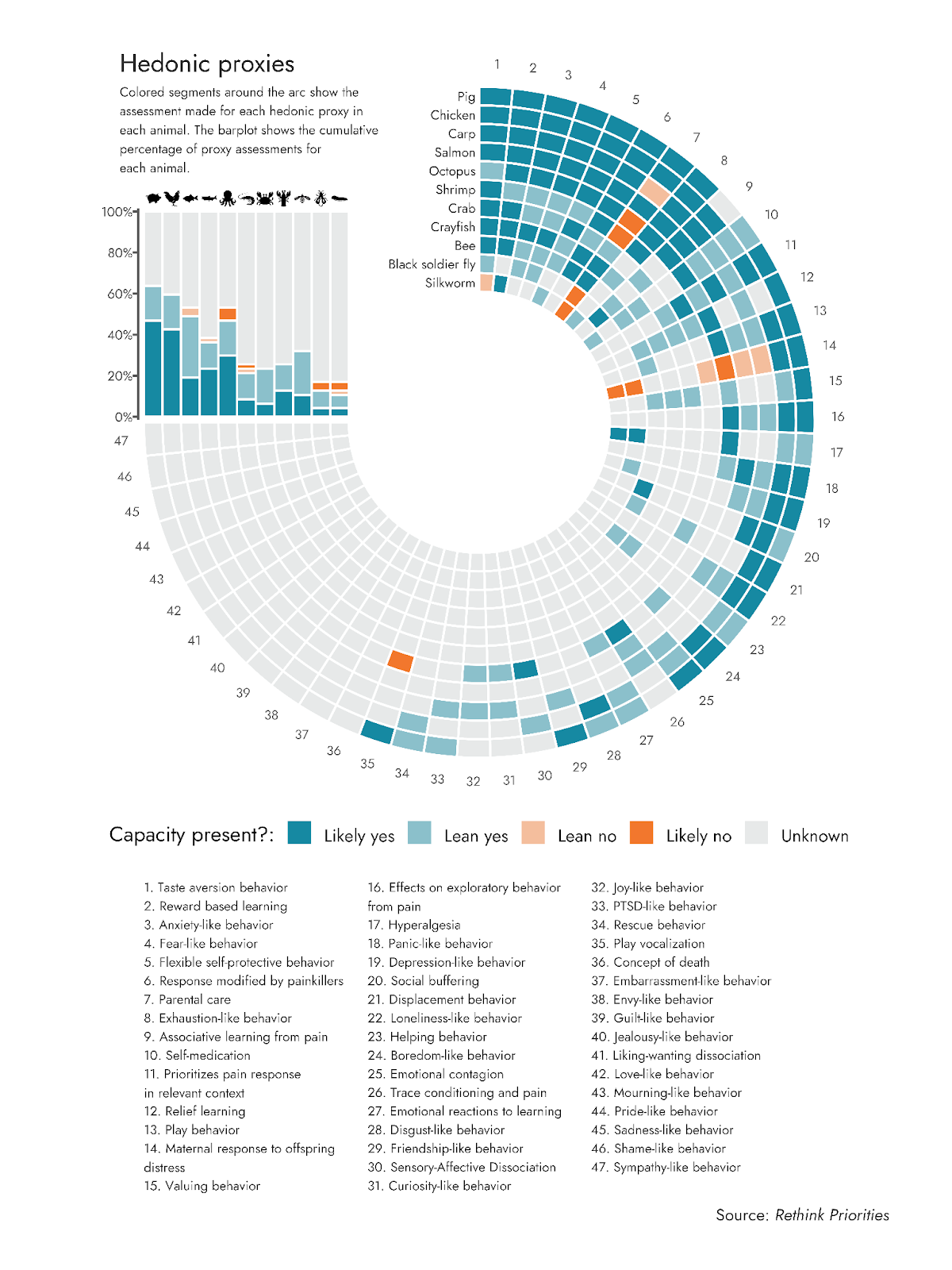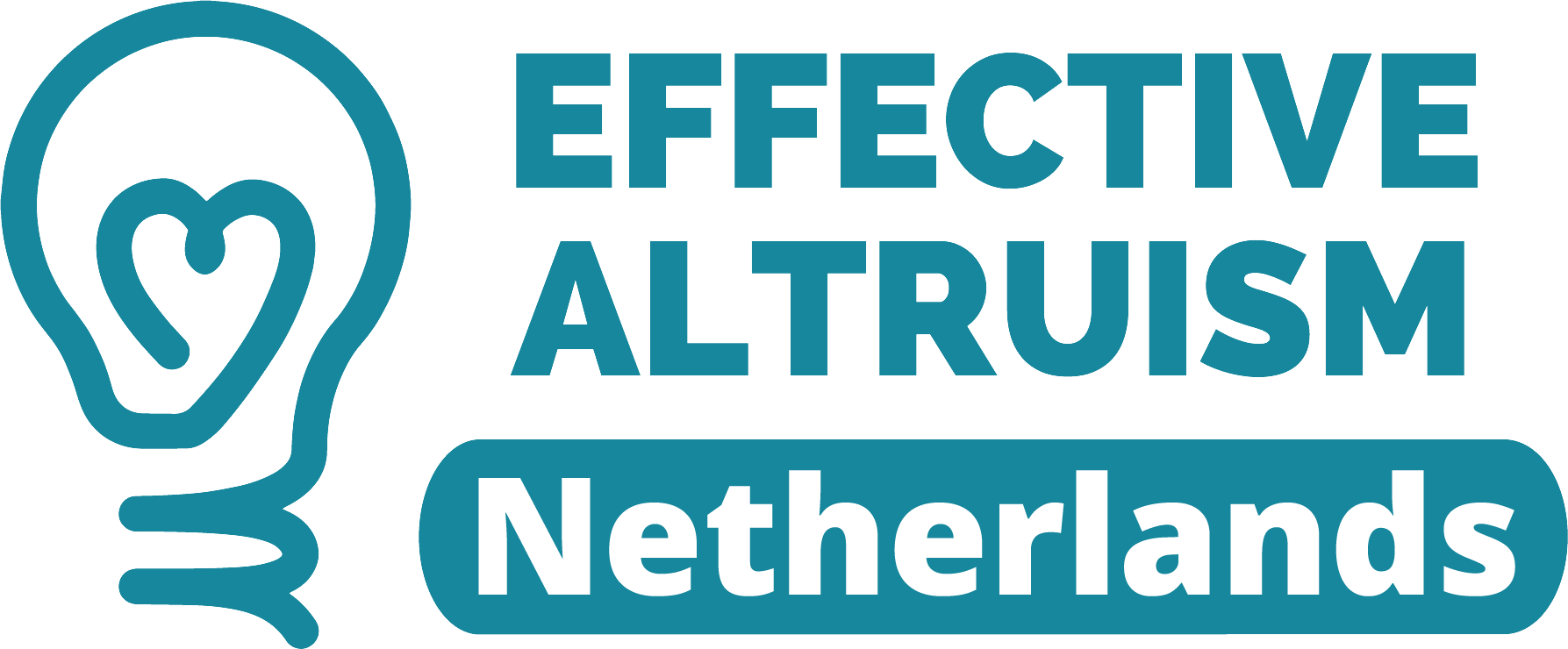Animal welfare as a collective priority
Key takeaways
- Over 70 billion animals suffer in factory farms annually, making animal welfare a critical issue to address.
- Ethical considerations argue for equal treatment of farmed animals and pets due to their capacity to suffer.
- The Netherlands, a leader in both factory farming and plant-based innovation, has a unique opportunity to impact animal welfare.
- Despite the vast scale of suffering, animal welfare receives limited attention and funding.
- Individuals can help by pursuing careers in advocacy, supporting plant-based food companies, and promoting reduced meat consumption.

Written by Joel Saarinen
Introduction
Text immediately below taken from Animal Advocacy Careers site, slightly reworded.
Animal suffering is one of the most pressing problems in the world. Over 70 billion animals are reared for food in the world each year, and approximately two out of every three of these animals are in factory farms, so the scale of suffering amongst animals reared alone is vast, not to mention the potential indirect suffering animals experience from human-driven environmental degradation or suffering in the wild.[1] In the Netherlands alone, where most farms in the country are factory farms, 1.7 million are slaughtered each day [2]. In spite of these numbers, relatively little is being done towards easing this suffering [3].
What are the basic arguments for animal welfare?
Why should we care in the first place?
“We eat animals because we eat animals.” Tobias Leenaert
If we are not allowed by law to abuse our pets, then why is it allowed to abuse farmed animals? Since we don’t know what the intelligence is in non-human animals, should we care less about their welfare? Even if their experience of suffering would be less intense than that of humans under the same conditions, should we put weight on promoting animal welfare?
Peter Singer has made some strong arguments to consider here [5].
- It seems uncontroversial to claim that all humans should be given equal consideration. The needs of humans from a certain race or sex, among other categories, should not be more important or more worthwhile than those of another.
- Equal consideration is fundamentally given as a result of everyone’s capacity to suffer. For instance, rocks are not given consideration because they do not have the capacity to suffer.
- Other animals, like humans, are also capable of suffering. [6]
- Thus, the equal consideration given to all human beings should be extended to animals. As we would not collectively stand for any group of humans to go through the suffering that animals go through in factory farms, for instance. The mitigation of animal suffering and promotion of animal welfare should be a key priority.
Of course, the success of the argument above does also hinge on the extent to which animals are capable of suffering. For those interested, the Rethink Priorities Welfare Range Table provides is the first attempt to assess a wide range of welfare-relevant traits in different animals. This initial step can help to better prioritize interventions. For example: Pigs and chicken show both loneliness and depression-like behavior. The Welfare Footprint Project also attempts to map out the amount of suffering in different production systems to give more insights into how much animals actually suffer.

This graph shows what we know about the assumed capacity in the 11 most-reared animals. 47 capacities are listed such as the capacity to feel pain and learn from that. For a lot of animals the state of these capacities are unknown. More research is needed.
Source: Rethink Priorities Welfare Range Table
The scale of animal suffering
This section is taken from the Animal Advocacy Careers site.
When we think of the amount of animal suffering it is easy to miss the sheer scale of it. This is understandable. Unless it is a part of our job we don’t see the inside of factory farms, where a large number of animals reside. Our World in Data statistics [7] show that there are more than 70 billion land animals, 124 billion finfish [8] and 413 billion crustaceans [9] that are farmed each year.
It may be hard to interpret these numbers, even if we know a lot about animal cruelty. It may be useful to compare them with human populations. Here are the approximate population of some countries and cities:
Amsterdam: 0.9 million
Netherlands: 18 million
Germany: 83 million
France: 65 million
EU: 448 million
United States: 336 million
India: 1.4 billion
China: 1.4 billion
Note that the “total” human population in the world is approximately 8 billion. More than 70 billion land animals and 124 billion finfish and 413 billion crustaceans are farmed and slaughtered every year. This is huge.
Here is a tree map chart with all those numbers to help you visualize. These numbers are in millions and don’t include the aquatic animals.
For some further perspective, one may visit the staggering Animal Kill Clock.
Farmed animals & alternative proteins in the Netherlands
Given the statistics about animal suffering worldwide presented above, one might be curious about the situation in the Netherlands. Below are some facts:
- Each day, 1.7 million animals are slaughtered in the Netherlands. [11]
- The Netherlands is a leader in developing agricultural technology to make factory farming easier and more efficient. This includes computer systems that keep a close eye on the stables, chicken egg incubators to ensure that all eggs hatch at the same time, to name a few. [12]
- The vast majority of farms in the Netherlands are factory farms. [13]
- The Netherlands, in spite of its relatively small geographical size, is Europe’s biggest meat exporter. [14]
In other words, The Netherlands stands out for its efficiency in factory farming.
This being said, the country is also a leader in the production and consumption of plant-based meat alternatives.
- The Dutch consume the most plant-based products in Europe. [15]
- The Netherlands was ranked the third most innovative country for plant-based food globally [16], boasting more than 60 companies and research institutions focused on plant-based protein. [17]
- Wageningen University and Research, located in the namesake Dutch city of Wageningen, is one of the best agricultural universities in the world. It is situated in a larger region that has been called the “Silicon Valley of food” due to the density of activity involving research and production of plant-based proteins in the area. [18]
- Amsterdam is the second-best place in Europe for agtech* and food startups. [19]
* Agtech is short for “agricultural technology.” It refers to the use of technology to improve farming practices, increase efficiency, and enhance agricultural productivity.
In conclusion, factory farming practices are as prevalent in the Netherlands as anywhere else. With this said, we are still uniquely positioned to make a difference in animal welfare through our globally leading position in food and agtech, and relatively large consumer acceptance of innovative sustainable protein.
Reasons for working on this problem
Copied from the 80,000 Hours “Factory farming” problem profile.
Neglectedness
This problem gets relatively little attention, even from major animal welfare groups. Lewis Bollard of Open Philanthropy has estimated that $165 million is spent per year on farmed animal advocacy internationally, though for-profit investment in alternative proteins (which might also reduce the problem of factory farming) is much larger.
Tractability
Recent big wins for animals suggest that progress is tractable. Plant-based foods are rapidly gaining market share, while newer animal product alternatives (such as cultivated meat) are being developed. Animal advocates have also successfully prompted farmed animal welfare reforms, through both corporate and legislative commitments. As well as benefiting the animals directly affected, these welfare reforms likely encourage momentum for further progress.
Reasons for not working on this problem
Copied from the 80,000 Hours “Factory farming” problem profile.
You might find the arguments above unconvincing and think that the wellbeing of each animal matters much less than the suffering of each human. That the scale isn’t as large as problems that affect current generations of humans. (Note we are not claiming that this is the moral weight that animals should receive, but rather that if you assigned them this weight that would justify focusing on present-day human suffering instead.)
Here’s what you can do
Some material below copied and modified from the 80,000 Hours “Factory farming” problem profile.
- Visit our Alternative Protein Career Guide.
- Follow Animal Advocacy Career’s free online course.
- Work at effective animal advocacy nonprofits or the capacity-building nonprofits that support their work (such as Animal Charity Evaluators).
- Work at companies developing plant-based versions of animal-based foods. Possible role types include marketing, operations, engineering, business development, technical product-focused research, and software development.
- Pursue a career in politics or policy to encourage change from the inside, or build career capital that you can later apply to lobbying roles.
- Take part in the free course run by EA Netherlands to learn more about animal welfare and opportunities in the Netherlands
- Conduct academic research relevant to plant-based and cultivated meat or animal advocacy strategy.
- If you have a public platform (e.g. as an academic, journalist, or politician), promote and advocate for reduced meat consumption, improved conditions of factory farms, or better yet, plant-based and cultivated meat.
- Volunteer for organisations working on the problem.
- Promote animal advocacy, veganism, vegetarianism, or reducing meat consumption to your friends and colleagues.
- Try the veggie challenge.
- See many more suggestions in our interview with Lewis Bollard, as well as in this blog post (which is organised by different backgrounds and skills).
Read high-impact inspiration articles:
- Mexican real-estate banker becomes world’s leading shrimp welfare advocate (in Dutch)
- How Nicoll started The Mission Motor, a charity that offers concrete support to non-profit organizations
Meet like-minded people:
If you want to start making the world a better place for everyone. You can join our community and meet like-minded people. Curious about how you can start making more impact in your life or career?
- Sign up for our intro programme
- Check-out events happening near you
- Check out the groups we got across the Netherlands
- Go through 80,000 hours career guide
You might also like:
Footnotes
- Animal Mattters
- Wakker Dier (in Dutch), Animal Rights NL (in Dutch)
- Neglectedness can be measured in a variety of ways, one of which is the percentage of philanthropic funding that goes towards human versus animal-related causes. In 2015 97% of philanthropic funding in the US went towards human aid.
- Though factory farming is perhaps the most common cause of animal suffering that comes to mind, it is not the only one. Wild animal suffering, for instance, refers to the suffering that animals experience in the wild, as their lives are often filled with disease, hunger, and fear of predators, among other concerns. That said,
based on the relative greater tractability and levels of neglectedness of interventions (ranking 80,000 Hours), this page will focus more on factory farming versus other sources of animal suffering. - Singer’s full argument is made in “All Animals Are Equal”.
- In this paper, Singer seems to treat suffering as a proxy for sentience, which could of course be challenged.
- Our World in Data on factory farmed animals
- Amount of farmed finfish from 1990 – 2019
- Amount of farmed crustaceans (shrimp and lobster)
- For every Dutch person 1 animal is killed for food every 10 days. Thanks to Erwin Rossen for coming up with this reformulation.
- Wakker Dier (in Dutch)
- NPO Kennis (in Dutch)
- Animal Rights NL (in Dutch)
- The Washington Post
- The Good Food Institute Europe
- Eurosoy (in German)
- Fast Company
- Fast Company
- iAmsterdam
Acknowledgements
We want to thank (in no particular order): Joel Saarinen, Ruben van den Bulck, Rik-Jan Veldhuijzen, Erwin Rossen, Koen van Pelt, Ruben Smouter, James Herbert, Marieke de Visscher, Vicky Broos, and Tomek Olszewski for their input and feedback.

